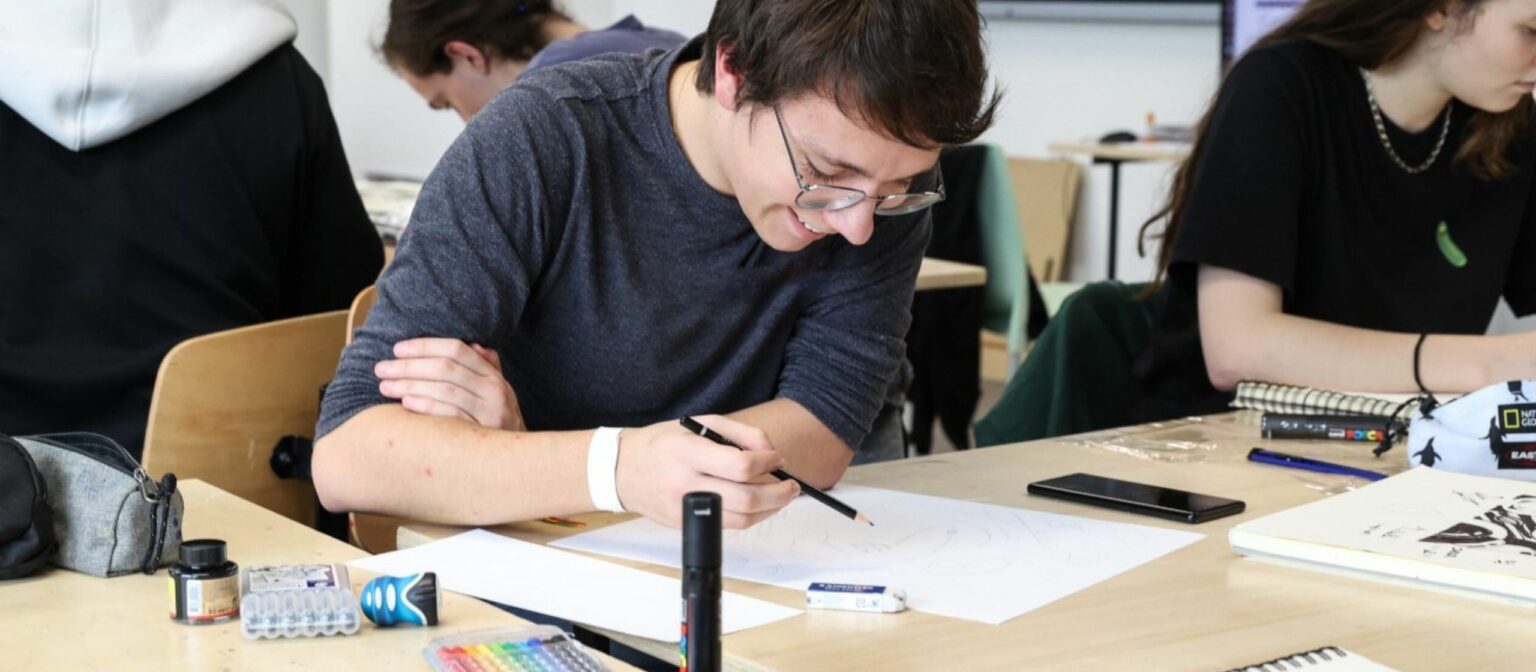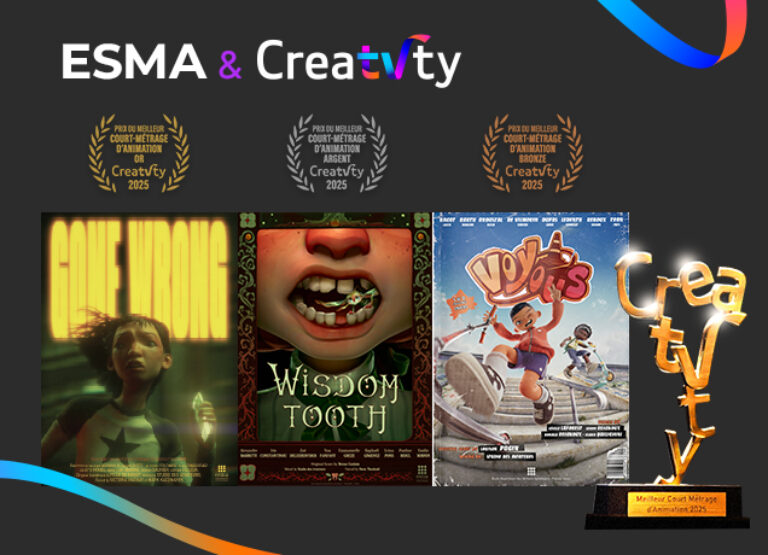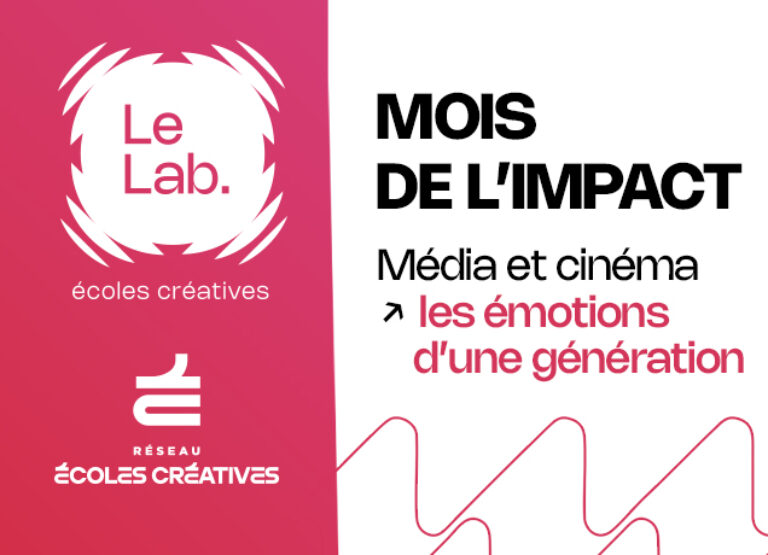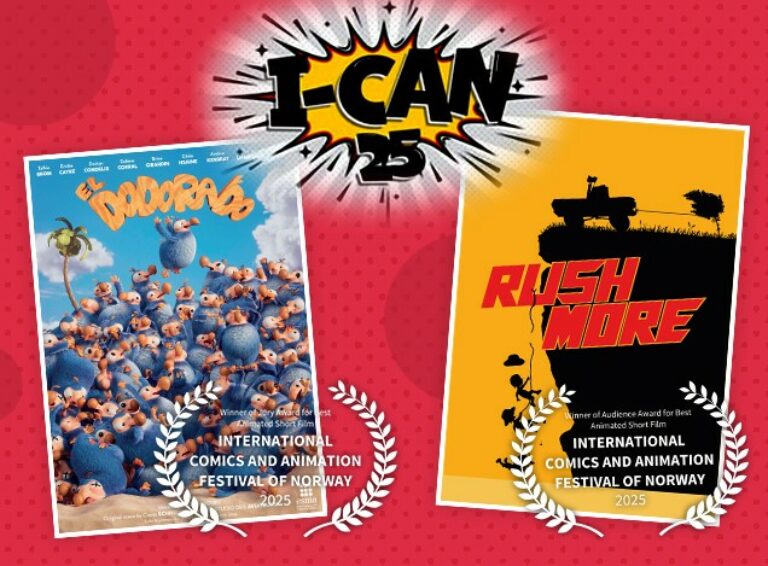
- Published 02.17.2025
- type Thematic news items
- Training 3D Animation & FX
In an industry as artistic as 3D animation, the portfolio is much more than a simple collection of work; it is your business card that can open doors to the studios of your dreams. Employers and recruiters quickly judge a candidate on the quality and relevance of the work he or she presents. In this article, we will guide you through the steps necessary to create an attractive and convincing portfolio, tailored to the expectations of the sector. We will explore the selection of works, the organisation of the portfolio and the importance of adding a personal touch.
Selection of works
The first step in building an attractive portfolio is to carefully select the works you include in it. It is not simply a question of showing everything you have created, but rather of presenting the pieces that highlight your specific skills and correspond to the expectations of recruiters. ESMA takes to heart the task of encouraging its students to organise their portfolio. For ESMA students, it would be particularly relevant to choose to highlight the 3D animated film they made as their final year project. Discover ESMA’s 3D animated films.
Show diversity and specialisation
A good 3D animator portfolio should reflect both your versatility and your expertise. For example:
- If you are applying for a character animator position, show walking cycles, action scenes and expressive animations.
- If you are aiming for a career in special effects (VFX), include examples of realistic simulations (fire, water, smoke), explosions, rain, etc.
Recruiters are looking to assess your mastery of basic techniques and your ability to solve complex problems. A well-executed and specialised piece of work is always preferable to a large collection of simple examples.
Highlight recent projects
Trends and tools in 3D animation are evolving rapidly. Your portfolio should reflect your ability to work with the latest technologies and styles. Even if you completed an impressive project a few years ago, it is preferable to highlight more recent work to show that you are in step with the industry. A Unreal 5 rendering will attract more attention than an Unreal 4 rendering, for example.
Prioritise quality over quantity
It is better to include five exceptional pieces of work than ten average projects. Recruiters spend little time on each portfolio, so it is crucial to capture their attention quickly with your best work. Make sure that each piece is technically sound, artistically appealing and free from visible defects.
Adapt the content to the position you are applying for
Customise your portfolio according to the job or studio you are applying to. If you are targeting a studio specialising in cartoon animation, focus on animations that are dynamic and colourful. For a studio specialising in photorealism, focus on works that are technically sophisticated and credible.
Organisation of the portfolio
Once your best work has been selected, the way you organise it in your portfolio plays a crucial role. A well-structured presentation improves readability and demonstrates your professionalism. ESMA teaches its students how to organise and produce a high-quality portfolio.
Create a powerful introduction
Your portfolio should begin with a powerful piece that immediately captures the attention of the recruiter. This is your moment to make a memorable first impression. Similarly, end your portfolio with a striking work to leave a lasting impact.
Classify your creations by category
Organise your work into clear sections, for example, if you are a generalist:
- Character animation
- Visual effects (VFX)
- Rigs and technical simulations
- Personal or collaborative projects
A clear organisation allows the recruiter to navigate easily and to focus on the aspects most relevant to the position.
Include brief and precise descriptions
Add a short description for each work:
- What was the objective of the project?
- What tools and techniques did you use?
- What challenges did you face and how did you overcome them?
These descriptions provide context and demonstrate your ability to think critically. For example, instead of simply presenting an animation, you could write:
“Animation of a character created in Maya, highlighting various facial expressions to reflect different emotions. Work focused on fluidity of movement and lip syncing.”
Use a suitable platform
The choice of platform for your portfolio is just as important as its content. Here are a few options:
- Personal websites: Create your own website using tools such as Wix, WordPress or Squarespace. This gives you full control over the presentation.
- Professional platforms: Publish your work on ArtStation, Behance or LinkedIn, where industry recruiters are active.
- Hosted videos: Use platforms like YouTube to show moving animations. For example, ESMA hosts all the 3D graduation films made by students on the school’s main channel: EsmaMovies.
- Social media accounts: You can create showcase accounts on social networks to highlight your creations. Be sure to link them together or link them to a contact so that a studio can reach you.
Make sure that your portfolio is accessible and that it loads quickly, especially if you are applying internationally.
Show the creative process
Including work-in-progress or extracts from your work process can be an excellent way of demonstrating your technical skills. For example, show the progression from a rough model to its final animation. This helps recruiters understand your methodology and your ability to solve problems.
The importance of a personal touch
A professional portfolio should also reflect your personality and your aspirations. This will set you apart in a competitive sector where many candidates have similar skills.
Present personal projects
Including personal projects in your portfolio shows your passion for 3D animation and your ability to innovate outside the constraints imposed by clients or employers. These projects can be experimental animations, creations inspired by your artistic influences or even tributes to works that have left a mark on you.
For example, if you are passionate about video games, you could recreate an iconic scene from a game with your own interpretation. This type of work reveals your interests and your creativity.
Add a biography or an ‘About me’ section
In a portfolio, a short section where you talk about your background, your professional goals and your inspirations can make all the difference. It humanises your application and helps recruiters understand why you are a good candidate. Mention your studies, your past experiences and what motivates you as a 3D animator.
Show your uniqueness
Personalise your portfolio to reveal your artistic style. This can be done through the choice of typography, colours, or even the way you present your work. Be careful not to overload the presentation, however: simplicity and clarity should take precedence.
Seek feedback and review regularly
Your portfolio is a living work that must evolve with you. Regularly seek feedback from colleagues or industry professionals to improve it. Constructive criticism will help you identify weaknesses and perfect your presentation.
Additional tips for a successful portfolio
In addition to the points mentioned, here are some practical tips to maximise the impact of your portfolio:
- Include a demo reel: A concise video (1 to 2 minutes) that brings together your best animations is an excellent way to quickly captivate the viewer’s attention.
- The demo reels of ESMA students are a good example to follow: start with strong projects and end the video on a high note. Studios should immediately grasp your level.
- Check compatibility: Test your portfolio on different devices (computers, tablets, phones) to ensure an optimal user experience.
- Update regularly: Remove outdated work and add your new creations to show your progress.
- Add professional references: If you have worked for studios or collaborated on recognised projects, mention them to strengthen your credibility.
- Of course, your final graduation project, such as the short film you made in your final year of the 3D Animation and Special Effects course at ESMA, is a perfect project to showcase your skills and demonstrate your ability to work in a team.
Conclusion
Creating an attractive portfolio for a job as a 3D animator is a process that requires thought and care. Careful selection of the works, methodical organisation and a well-balanced personal touch are the keys to capturing the attention of recruiters. Don’t forget that your portfolio is a reflection of your talent, but also of your professionalism. By investing time and effort in building a quality portfolio, you maximise your chances of landing your dream job in the exciting world of 3D animation.





